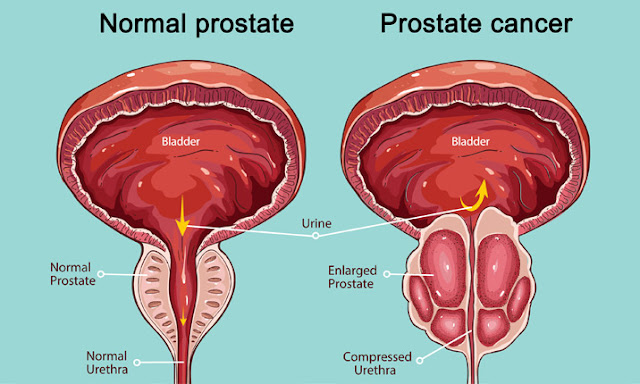What are the Stages of Prostate Cancer?
The time at which cancer is diagnosed defines the stage. These stages define the treatment that will be suitable for the patient. Staging is a system that determines how much area is affected. It gives an idea to the doctors on how cancer has affected the prostate.
The TNM System:
The TNM stages are used to represent the stages of cancer. Three phases
are used to describe the spread and the growth of the tumor.
• Tumor
(T): It defines the actual size of the tumor in prostate
cancer.
• Nodes
(N): It is used to find out whether it is spread to the
lymph nodes or not. If it is spread to the lymph nodes, then it also defines
how far it’s spread.
• Metastasis (M): It defines the spread of cancer.
Determining Prostate Cancer Stages:
The doctors combine Gleason score, PSA levels, and the results of TNM.
This process is called stage grouping. These stages determine the course of the
treatment. The stages are denoted using Roman numerals.
Stage I:
In this stage, cancer has not spread anymore and is only developing in
the prostate. Sometimes in many cases, during a DRE or MRI, it goes undetected.
The patients in this stage have PSA levels less than ten and less than six for
a Gleason score. The size of the tumor is half or less.
Stage IIA:
The cancer tumor has not grown more than the prostate. The tumor might
go undetected during DRE and MRI by the doctors. It can touch half of one lobe.
Both lobes are not infected in this stage. The score should be seven or less
for Gleason. The PSA level might be less than twenty.
Stage IIB:
The cancer is present only in the prostate and hasn't spread any
further. It sometimes cannot be visible during a DRE or MRI. One or both lobes
might be affected by the tumor. PSA levels are less than twenty, and seven is
the ideal score for Gleason.
Stage IIC:
The doctors might find it hard to detect tumors during the DRE and MRI
as the cancer is present only in the prostate. It can be either in one or both
of the two prostate lobes. Gleason's ideal score is seven or eight, whereas it
should be less than 20 for the PSA levels. In this stage, cancer can have
abnormal growth rather than that of the IIB stage.
Stage IIIA:
Cancer is not developed in the lymph nodes. The Gleason must score about
or less than eight. PSA levels should be at least twenty. It might get detected
during a DRE or MRI for some cases only.
Stage IIIB:
The cancer is not found in the lymph nodes but has affected the outside
area of the prostate. The ideal Gleason score is about eight or less. PSA can
be at any level.
Stage IIIC:
Cancer might or might not have spread from the prostate, but it surely
hasn't affected the lymph nodes yet. The PSA can be at any level, and the
Gleason score should be nine or ten.
Stage IVA:
Cancer could have affected the nearby tissues of the prostate. It could
have affected the lymph nodes that are present nearby. But, the remote parts of
the body from the prostate are not affected. The Gleason and PSA do not have
any specific number in this stage.
Stage IVB:
The lymph nodes near the prostate are affected due to cancer spread and
are still spreading. Other parts like distant lymph nodes, other organs, and
bones might be affected by the tumor. It does not have any specific number or
score for Gleason and PSA levels.
It is crucial to determine the right stage as the treatment will solely
depend on it. However, Zytiga medicine can help you to fight prostate cancer.


Comments
Post a Comment